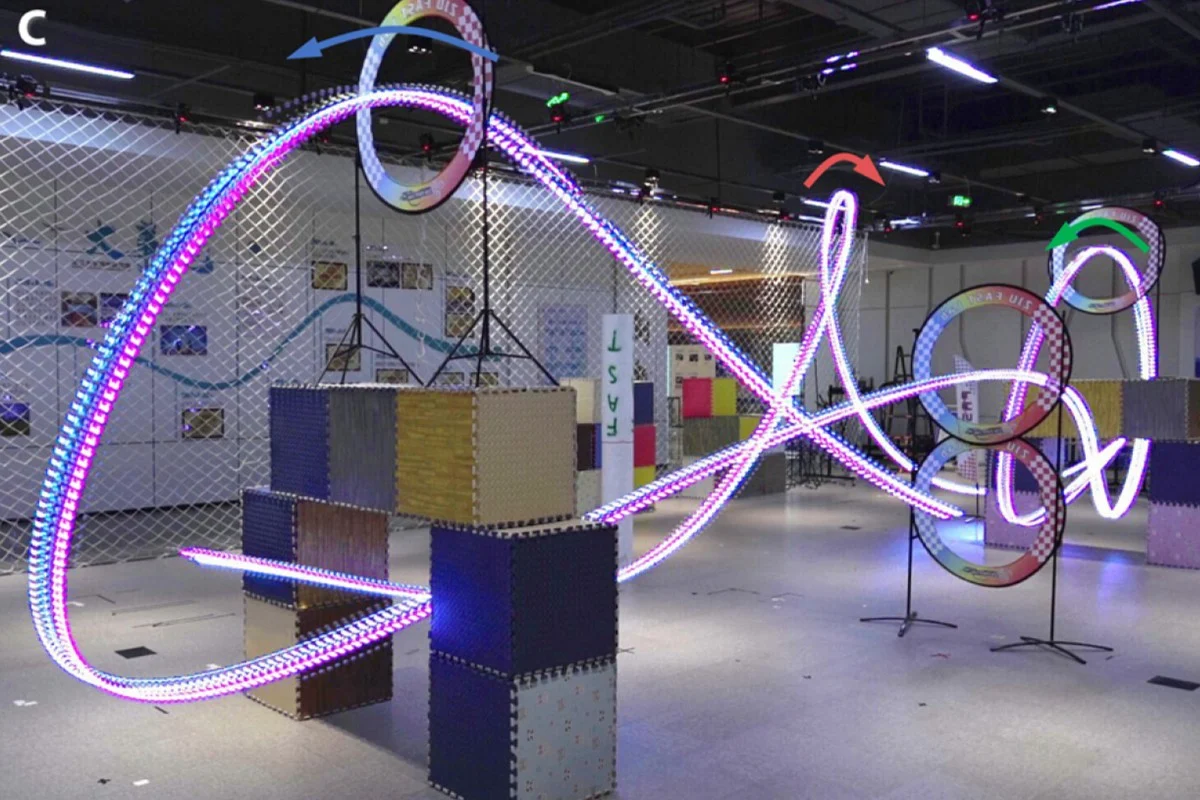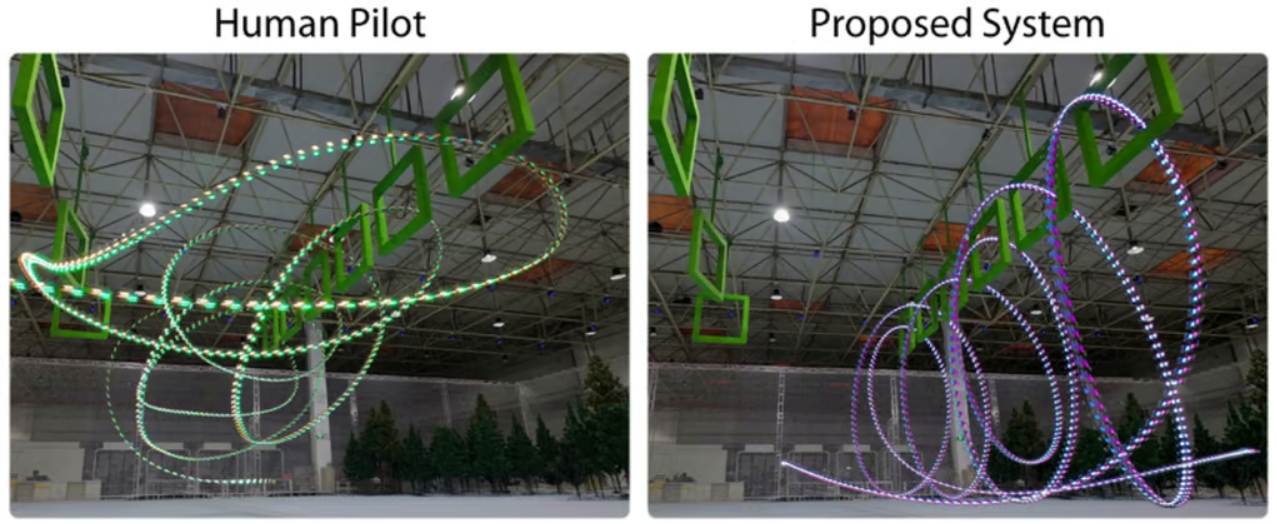 AI Digest Pending…
AI Digest Pending…
Chinese research team enables drones to perform high-risk and sophisticated aerobatic manoeuvres with a 100 per cent success rate
A Chinese team has developed a unique algorithm that gives first-person-view (FPV) drones the ability to perform autonomous aerobatic manoeuvres, unlocking their full potential to outperform humans in intense flight missions.
Details of the feat were published on April 16 in the peer-reviewed journal Science Robotics.

Inspired by nature's aerial acrobats like falcons and bats, Zhejiang University researchers have developed an AI system enabling drones to perform advanced aerobatics surpassing human pilots. The breakthrough algorithm uses motion-intent translation and risk-reward evaluation to execute complex maneuvers like inverted flights through 80cm rings and serpentine tunnel navigation without hardware upgrades.
In head-to-head tests, the AI achieved 100% success in inverted loop challenges, while a professional pilot succeeded only 12.5% of attempts, with the AI demonstrating tighter, more efficient flight paths. The technology could revolutionize disaster response (navigating collapsed buildings), scientific exploration (volcanic vents), space operations (debris avoidance), and cinematography (stable autonomous filming).

Current limitations include reliance on pre-mapped environments and lack of swarm capability, but researchers highlight its potential to redefine drone performance in extreme conditions through intelligent motion planning rather than physical upgrades. "When physical limits can't be breached, motion intelligence becomes the new frontier," notes the team, whose work demonstrates how biological strategies can transform robotic flight capabilities.
The system's ability to autonomously generate and execute aerobatic trajectories marks a significant leap toward deploying drones in previously inaccessible environments.
